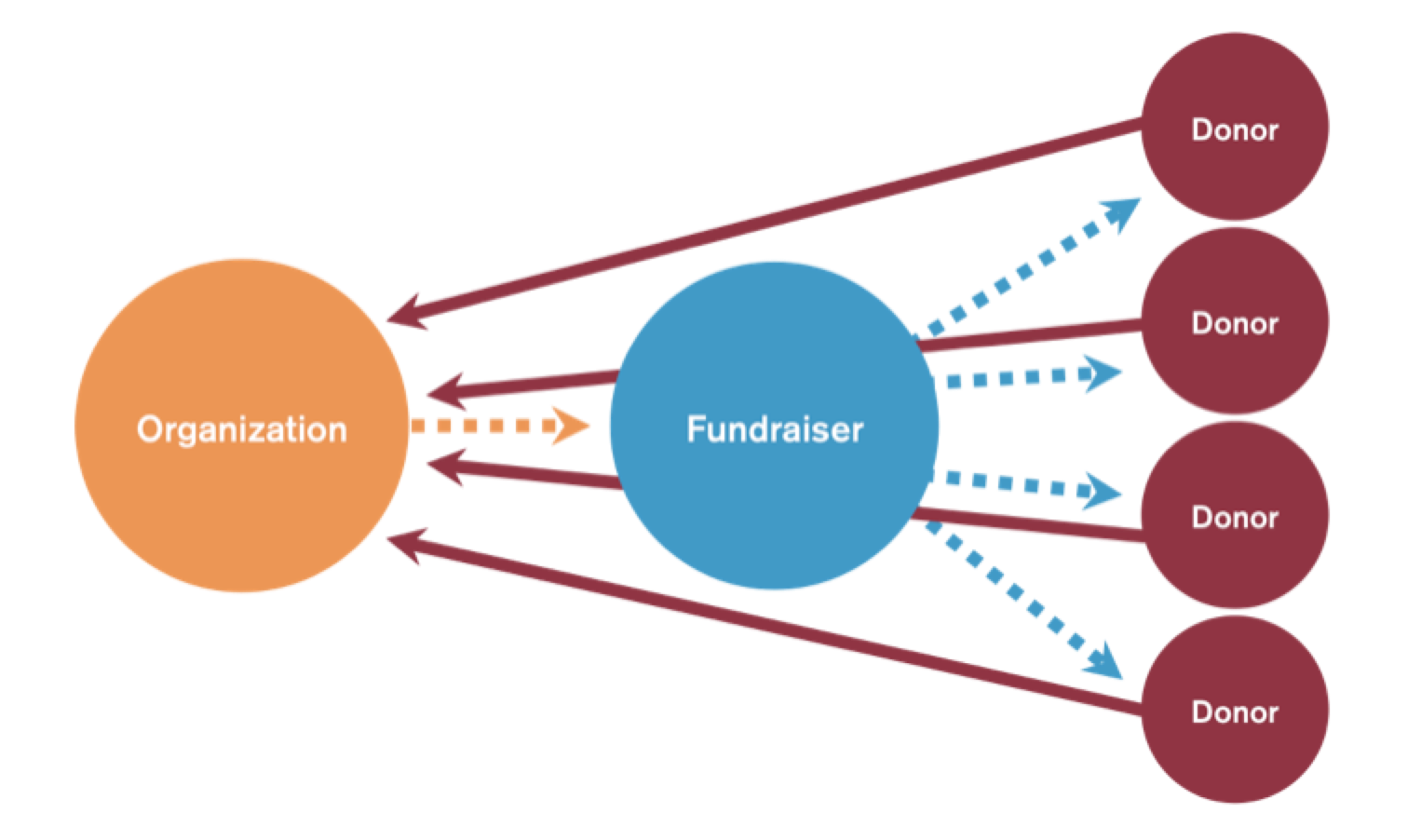The 3 Layers Of All Great Peer-to-Peer Strategies
The internet is filled with infinite possibilities. It hosts a tremendous store of knowledge, but it's far more than an encyclopedia: this powerful aspect of our modern lives is a network, built on sharing and connection. Many nonprofit organizations have realized the potential of the web for both raising awareness and generating revenue. Peer-to-peer fundraising can help your organization harness the power of networks, both on and off the web, with your most loyal, influential supporters at the center.
First, what is peer-to-peer fundraising?
Traditionally, nonprofit organizations have built a one-on-one relationship with donors, asking for support, usually in the form of a monetary donation, in order to create the change that both the organization and supporter believe in. It's a straight line of communication between the organization and the donor. As peer-to-peer fundraising has come to the forefront, organizations have realized that they can increase their networks and reach. Instead of asking supporters to give money, organizations are asking them to reach out to their friends and family, to ask their networks to support your vision for change, as well. By embracing, optimizing and empowering your peer-to-peer networks, you can reach and engage with a far greater number of potential supporters.
As you think about launching a new peer-to-peer initiative, consider these three questions as a starting point.
1. What's your program's positioning?
When you're developing a plan for a new peer-to-peer program you must consider how it fits into your organization’s revenue strategy. You don't need to communicate this complexity to your network, but you do need to understand it yourself. Don't engage in peer-to-peer programs just because they're sociable or trendy. Do them to fill a true need in your organization. Consider the benefits and potential of peer-to-peer, and the purpose of your overall peer-to-peer portfolio, as well as the programs within the portfolio. What are your goals developing this program? Is launching a new program an organizational priority right now? Are there competing initiatives that may demand more focus and investment? Situating your campaign in the context of your overall peer-to-peer portfolio, as well as the whole organization, can help you ensure that you're set up well to answer the next questions.
 2. What's the purpose of your campaign?
2. What's the purpose of your campaign?
When you're developing your peer-to-peer program, you need to have a laser-sharp purpose. Your organization is complex and so is your audience, but this is not the time to be complicated. We've said it many times before, start with your core group of supporters. Don't try to be everything to everyone. If you do, you will dilute your message and purpose in trying to please the masses and will wind up with a muddied mess. Instead, build campaigns that have a clear, easily communicated focus. The simpler you make this message, the easier it will be for your supporters to pass it along. Focused campaigns include these components:
-
A specific purpose: What are you trying to achieve? How will you know when you’ve achieved it?
-
A focused audience: Who are your trying to engage? Do you know how to reach them?
-
A clear and compelling message: What do you want people to do? Are you asking them to do it in a way that feels both easy and worthwhile?
-
Strong impact statements: How will their efforts make life better for someone? How will they make the world a better place?
3. Where are you on the broader peer-to-peer fundraising field?
Once you understand how peer-to-peer fits into your organization's overall portfolio, and you understand the purpose of the campaign you’re thinking about launching, the next question is, how does it fit within the overall P2P landscape? While we want you building a program that best suits you, being strategic about how you position your program amongst others is also important. When you understand the broader environment, you can make better strategic decisions. Consider questions like:
-
Where is there open space? Where is there crowding?
-
What are other players in the same cause and activity space doing successfully?
-
What are they struggling with?
If you take time upfront to properly consider peer-to-peer fundraising’s role within your organization, the programs purpose within your peer-to-peer portfolio, and the possibility within the overall landscape, you’ll set yourself up to make better decisions about what to do – and what not to do, about which activities take priority, about which initiatives will receive investment, and about how you and your team should be spending your valuable time.
Peer-to-peer offers a unique and exciting set of opportunities. Start with these three layers and build as you go. And if you get stuck along the way don't forget, we are here to help!
Share this
You May Also Like
These Related Stories

Lessons From The Private Sector: Peer-to-Peer Technology

A Introduction To Peer-to-Peer Fundraising



No Comments Yet
Let us know what you think